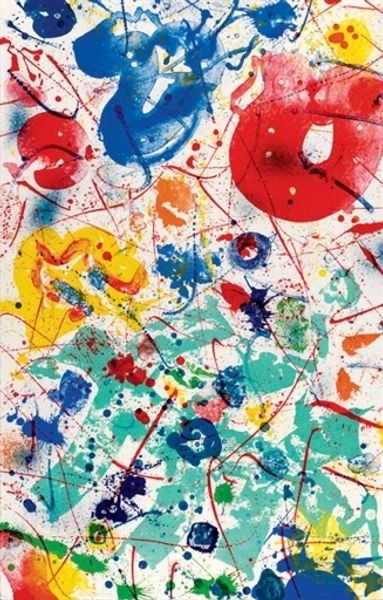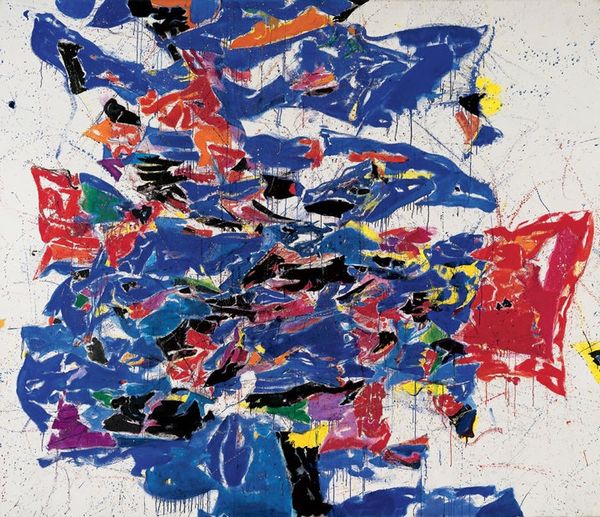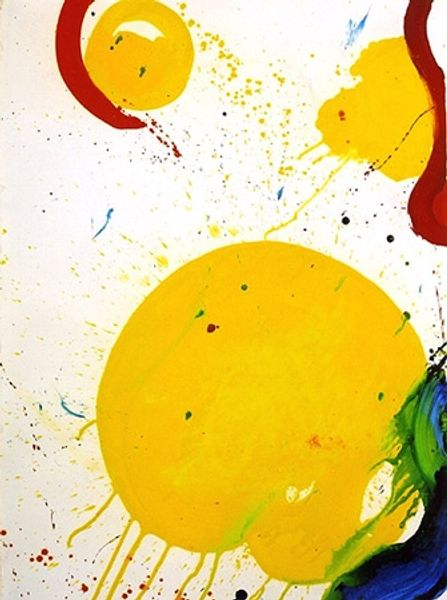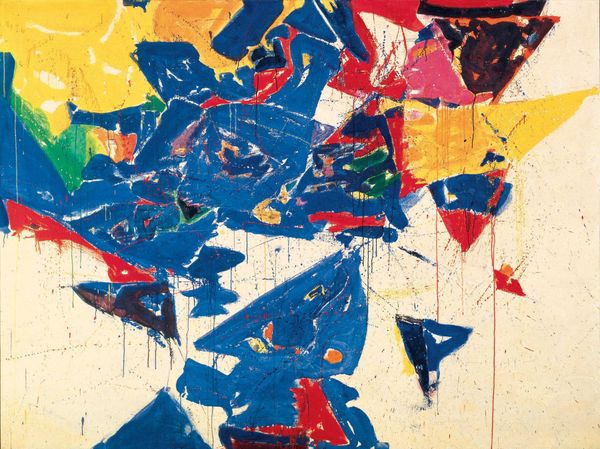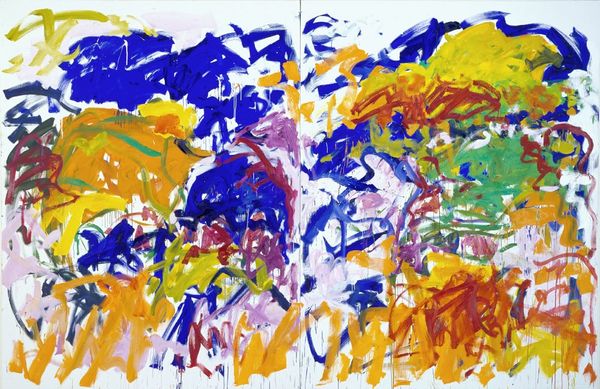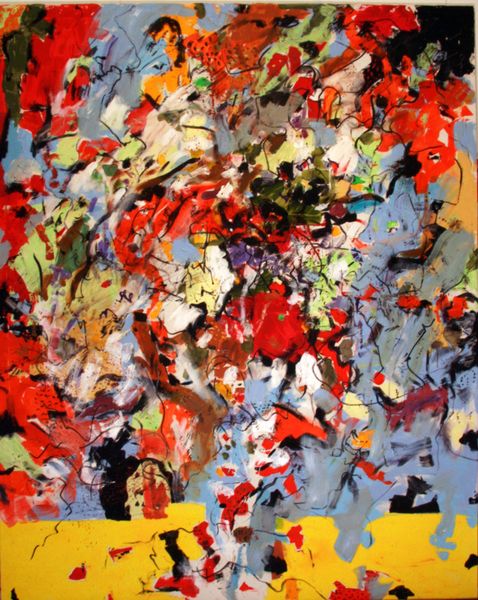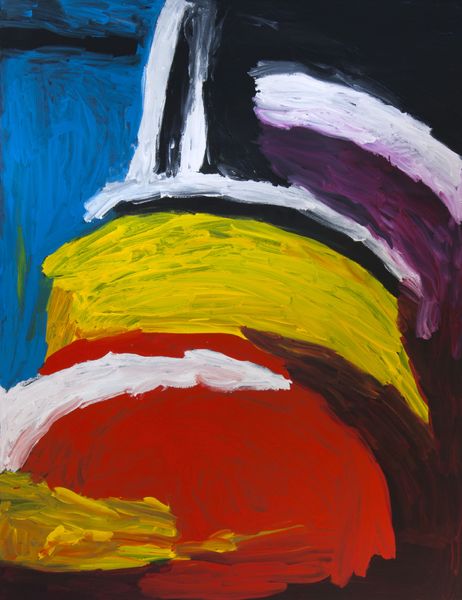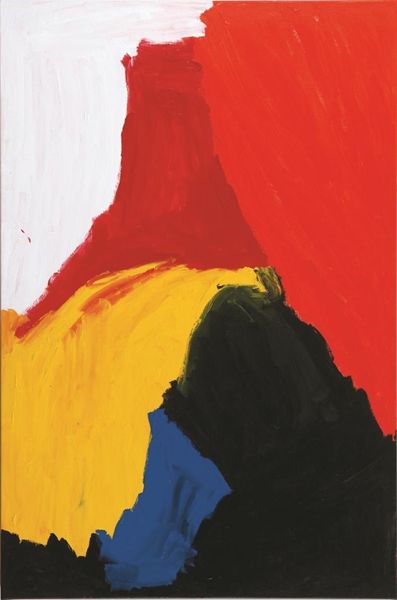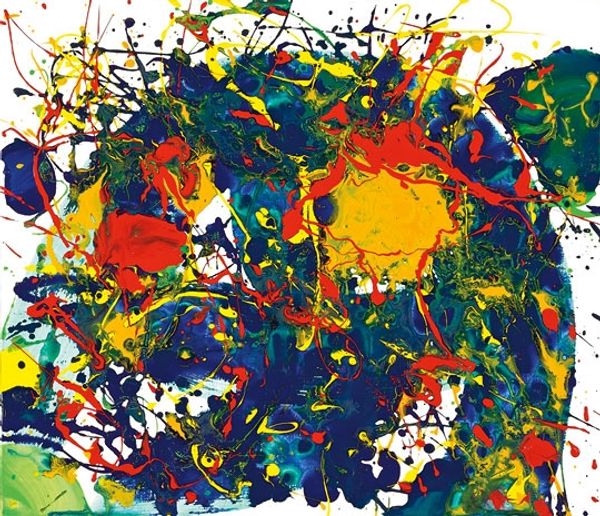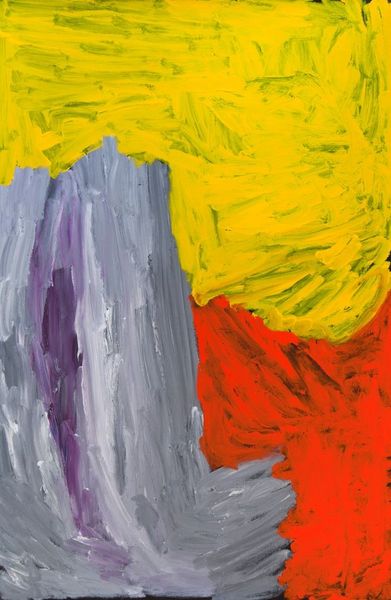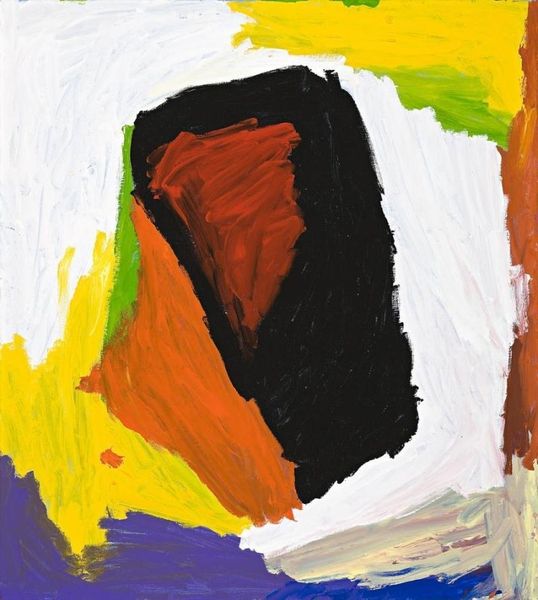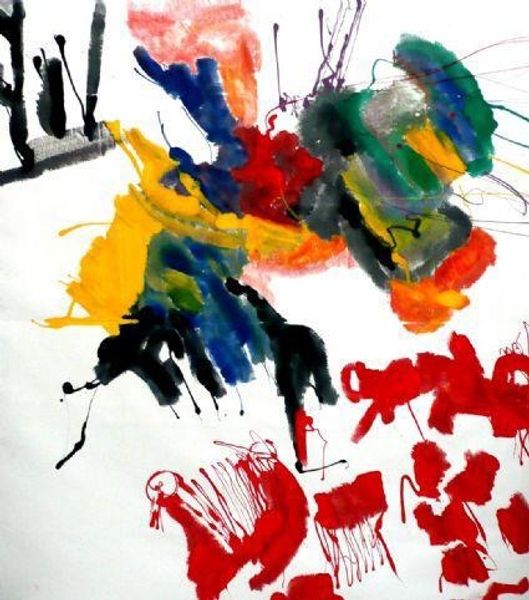
painting, acrylic-paint
#
abstract-expressionism
#
abstract expressionism
#
abstract painting
#
painting
#
landscape
#
acrylic-paint
#
abstract
#
geometric-abstraction
#
abstraction
#
abstract art
Copyright: Modern Artists: Artvee
Editor: So, here we have Alexander Calder's "Smeary," an acrylic painting from around 1949. It's incredibly dynamic, almost chaotic at first glance, with those broad brushstrokes and bold colors. How do you interpret this work? Curator: Well, first notice that despite the seeming chaos, the shapes themselves reference forms we recognize: butterflies, sun, maybe even a landscape implied. The energy comes from the artist disrupting these archetypes, reminding us that symbols are never fixed, that their meanings shift over time and culture. Editor: So, it’s about challenging the established meaning? Curator: Precisely! Consider the butterfly: Often seen as representing transformation and beauty. Yet, here, Calder presents two different butterflies in quite different artistic languages. The bright one almost childlike and joyous, the second almost trapped by rigid lines. Calder’s "Smeary" makes one wonder, which cultural reading of the butterfly will endure and why? Editor: That's fascinating! I hadn't considered the different representations of similar iconic shapes. It is as if Calder explores different ways our minds perceive a single symbol, playing with the subconscious connections we create through collective experience. Curator: Exactly. And that spiraling figure in the top left… does that evoke something for you? It may connect with the ancient cyclical symbols in other cultural artifacts, perhaps suggesting continuation. But it could also evoke something more recent. What is its place and what is Calder asking of the viewer here? Editor: I suppose it suggests art doesn't exist in a vacuum; it's this constant dialogue between past and present readings. It gives me a lot to think about regarding art history, the reading of objects in a space, and this artist's legacy. Curator: Indeed! Looking closely at the image we find this tension. Calder urges us to explore the layered meanings and to bring new insight into an historical reading.
Comments
No comments
Be the first to comment and join the conversation on the ultimate creative platform.
